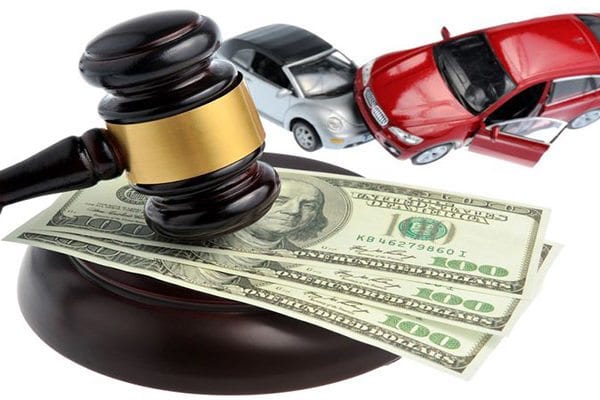
In many car crash cases, the negligence per se rule establishes liability as a matter of law. If the tortfeasor (negligent driver) violates a safety law, perhaps by driving while intoxicated or making an illegal lane change, this shortcut may apply.
However, in many other cases, victim/plaintiffs must establish the five elements of a traditional negligence claim.
Drowsy driving is a good example. A substantial number of motorists admit that they have been so tired they actually fell asleep while driving. Even if these people stay awake, fatigue affects the brain in the same way as alcohol. But there is no Breathalyzer or other such test for drowsiness.
Distracted driving falls into this category as well. Minnesota does have one of the broader cell phone/distracted driving laws in the country. However, it omits several kinds of distracted driving, including:
- Non-Device Distraction: Grooming while driving, eating while driving, and other such behaviors are just as distracting as talking on a cell phone.
- Hands-Free: There is evidence that hands-free devices are even more dangerous than hand-held devices. Hands-free gadgets are also distracting and they give the driver a false sense of security.
- Non-Prohibited Use: Using GPS navigation apps, web surfing, video watching, and other activities are arguably more distracting than phone calls and texts.
To establish liability in these and other situations, Brainerd Car Accident Lawyers use the five elements of a negligence case.
Duty
Most non-commercial drivers have a duty of reasonable care. This duty comes from Donoghue v. Stevenson, which is a 1932 case. In this case, which many people consider to be the first negligence case, the court concluded that “The rule that you are to love your neighbor becomes in law, you must not injure your neighbor.”
Today, drivers must be physically and mentally capable of safely operating a motor vehicle. They must be sober, well-rested, physically fit (e.g. no heart disease or epilepsy), and so on. Once behind the wheel, they must “look out for t’ other fella,” as my grandfather used to say.
Taxi drivers, bus drivers, Uber drivers, and other commercial operators have a higher duty of care. They are not quite insurers of safe conduct, but the standard is pretty close to that level.
Breach
Duty is a legal question for the judge, and breach is a fact question for the jury. Cases like U.S. v. Carroll Towing Company offer some guidance in this area. Not all conduct that violates the duty of reasonable care constitutes a breach of duty.
Assume the tortfeasor (negligent driver) takes her eyes off the road to adjust the air conditioner, misses a stop sign, and t-bones another car. Most Crow Wing County jurors would not consider adjusting the air conditioner to be a breach of duty, even though this act is technically distracted driving.
Instead, a breach is normally either a pattern of behavior or an egregious one-off. If the tortfeasor in the above example obsessively adjusted the air conditioner for several blocks, that would probably be a breach of duty. Or, if she turned her back to yell at her kids, that’s probably a breach of duty as well.
Cause in Fact
There must be a connection between the breach and the damages. In two-car collisions, Brainerd Car Accident Lawyers usually do not worry about cause too much, because it is straightforward in these cases.
In other situations, cause is a little more complex. For example, if the collision involved three or more cars, there may be a question as to which impact actually caused the damages. Cause is also an issue in environmental and mass tort cases, like the ongoing Roundup/glyphosate dispute or a dangerous drug claim.
Proximate Cause/Foreseeability
A connection alone is not enough. If I am late for work, I cannot blame my neighbor’s dog for barking at 2 a.m., waking me up, and causing me to oversleep.
This rule is in Palsgraf v. Long Island Railroad. In this colorful case which is right out of a Three Stooges short film, a man dropped a package while two railroad workers tried to push and pull him into a departing train. That package contained fireworks. When the fireworks exploded, the blast triggered a shock wave which knocked some large scales onto the plaintiff. The court later determined that the connection between the negligent railroad employees and the plaintiff’s injuries was too remote.
In some cases, the foreseeability rule expands. For example, if parents are in a car crash that injures their children, Brainerd car accident lawyers may obtain compensation for the parents even if they suffered no physical injury.
Damages
Tangible injury is the hallmark of a legal damage claim. Near misses do not satisfy this element, even though they may cause tremendous emotional distress.
Minnesota is a no-fault insurance state. So, to obtain compensation for pain and suffering, loss of enjoyment in life, and other noneconomic damages, the car crash victim must sustain a serious injury. The law defines a “serious injury” as one that results in a hospital bill greater than $4,000. If you stay in the hospital overnight or receive treatment at an emergency room, your bill will almost certainly be more than $4,000.
If the crash did not cause a serious injury, victims may file claims with their own insurance companies for lost wages, property damage, and other economic losses.
Connect with Tenacious Car Accident Attorneys in Brainerd, Minnesota
Accident victims may be entitled to significant financial compensation. For a free consultation with an experienced Brainerd car accident lawyer, contact Carlson & Jones, P.A. We do not charge upfront legal fees in negligence cases.

